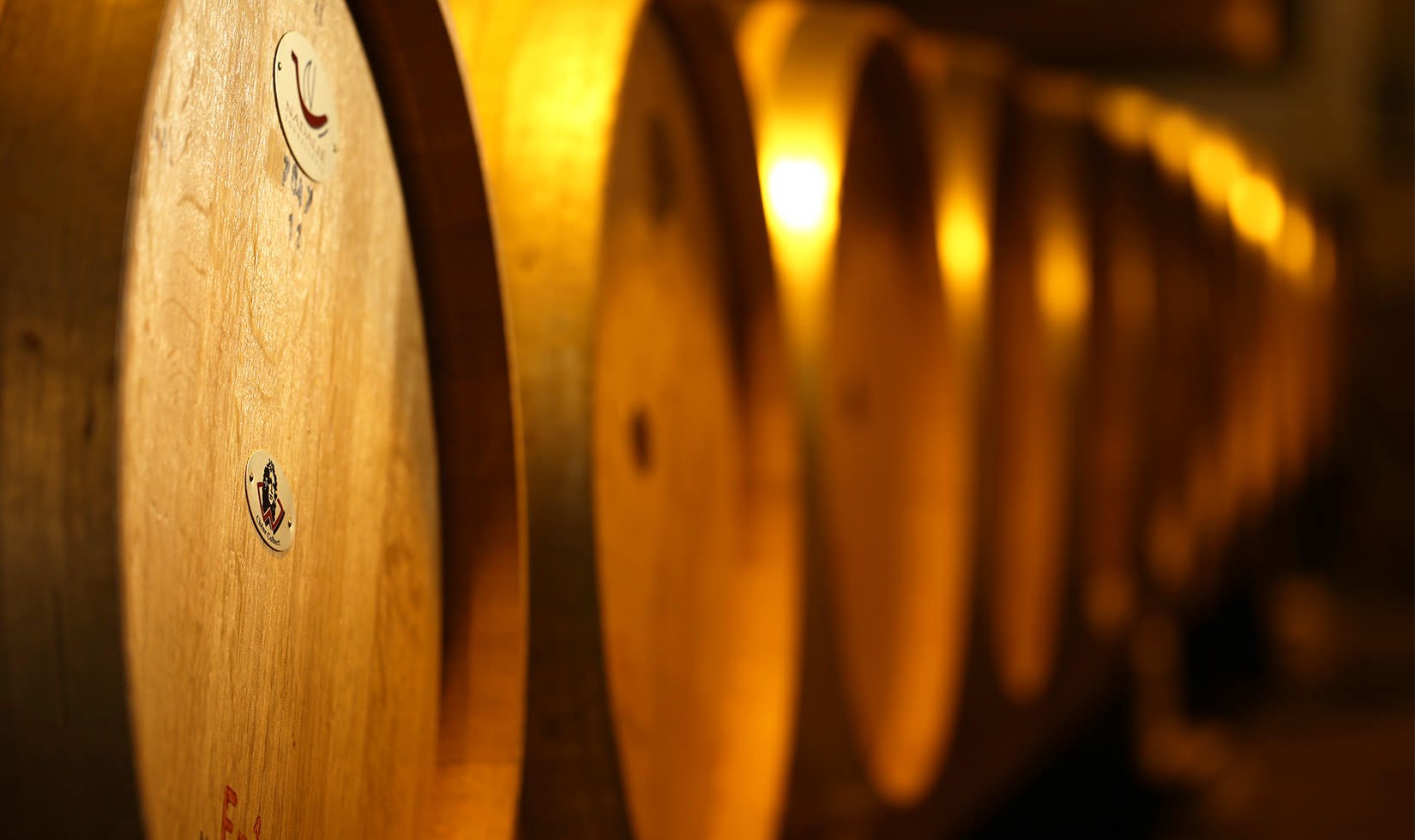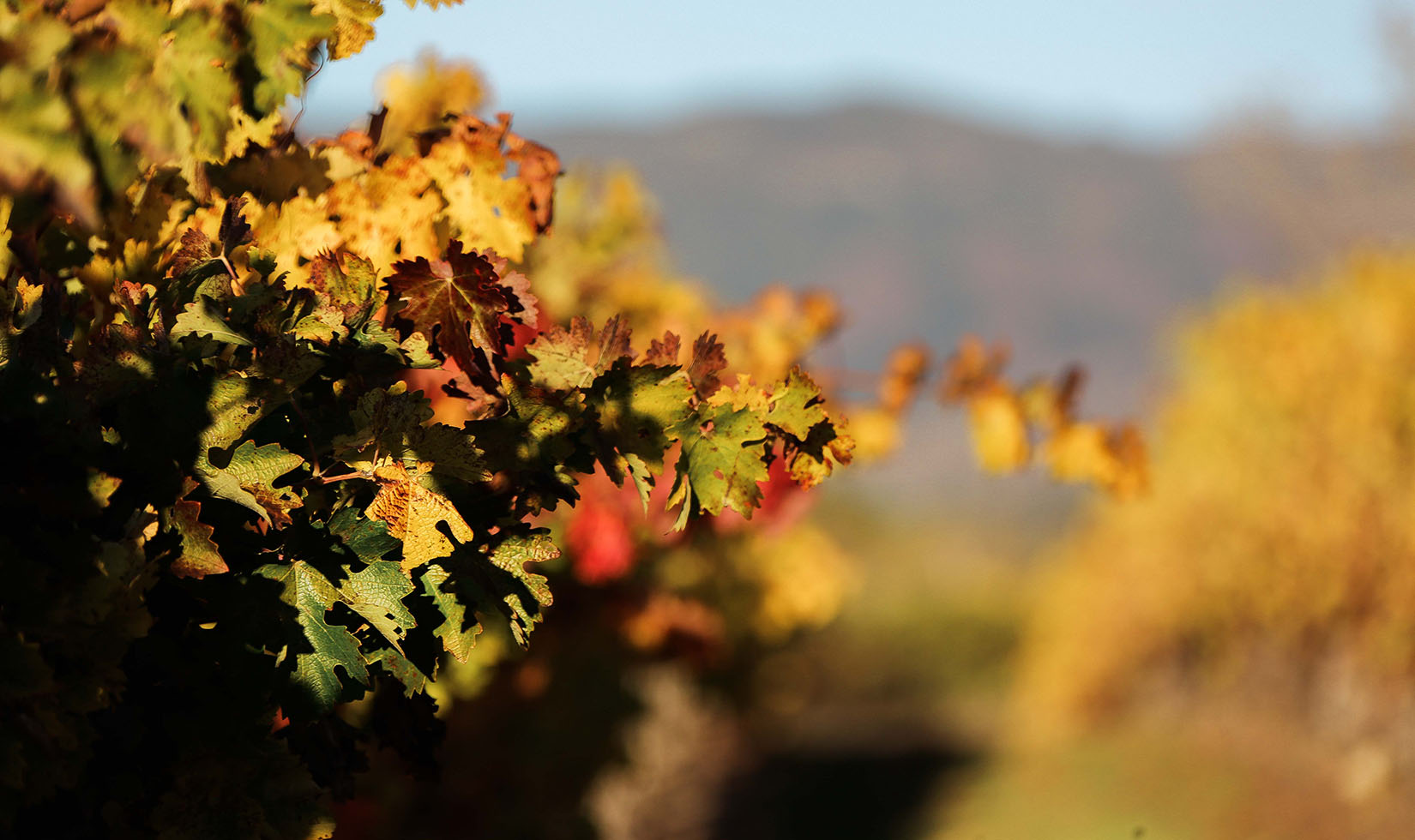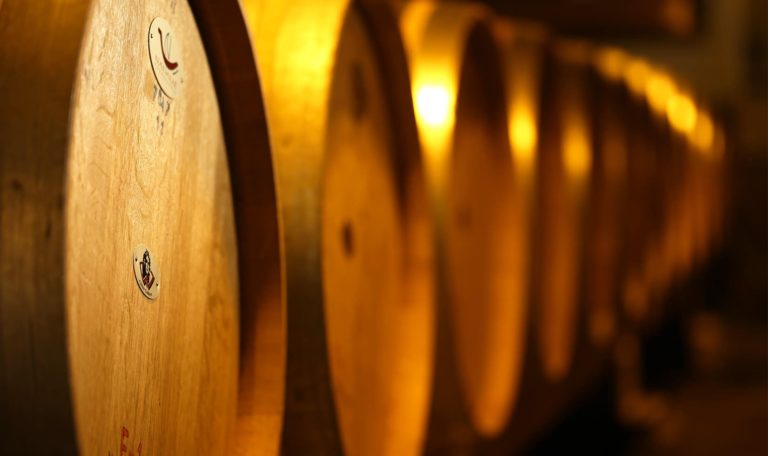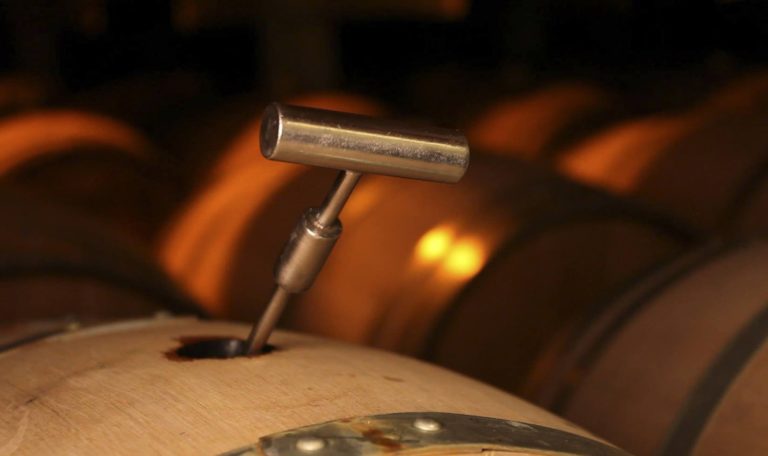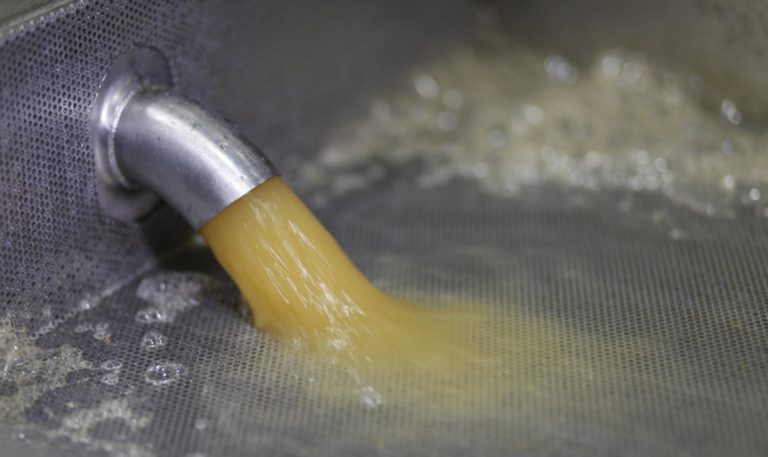November was a month of transformation at Napa and Sonoma wineries, both inside and out. That’s why fall is one of the best times to visit Sonoma County. It’s not just the fact that there are fewer crowds at tasting rooms and restaurants. Mother Nature is also putting on her biggest show. Here’s a glimpse into what’s happening in the vineyards and the wine cellars during the fall season. The fall foliage color change on the Jordan chateau is also a sight to behold.
Why Fall is the Best Time to Visit Sonoma
In the vineyards, the leaves are changing colors from red to orange to yellow. The plant’s carbohydrates continue the slow journey down into the roots in preparation for dormancy. Unwilling to give up their fight to continue providing through photosynthesis, a few leaves often hold onto their green pigments like proud soldiers hoping to be the first ever to survive the winter months. As temperatures drop and sun hours decrease, the grapevine leaves accept their fate and surrender their pride in November, exchanging their bright coats for a yellowish-brown uniform. Even when all the leaves have fallen, the vineyards show off their canes like a bushy hair cut as they await winter pruning. November still has a fair amount of sunshine and warm days. As we move into winter in wine country, sunny skies are replaced with swollen rain clouds, vests have been replaced by raincoats and pumpkin patches by Christmas tree lots.
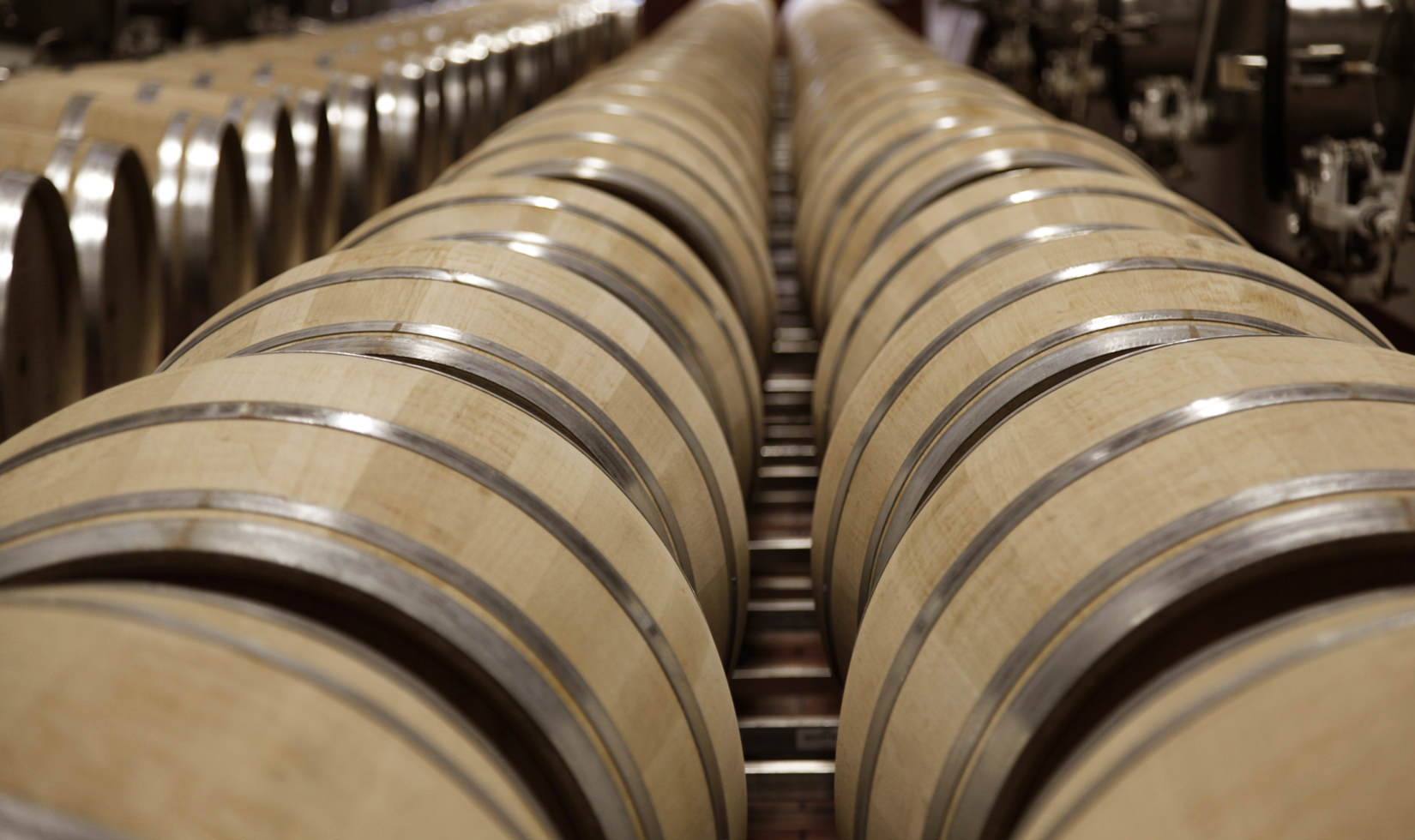
Winemaking in Action at Sonoma Wineries in Fall
Indoors, the waterfall-like rumbles of the wine pumpovers echo throughout the fermentation room in September and October, making winery tours very exciting. By November, those pumps have been silenced–the void of which is replaced only by the distant buzz of the morning leaf blower rounding up the yellow and orange casualties of Jordan chateau’s Boston Ivy. Most wines will have already finished primary fermentation, been drained, pressed and are nearly through the stabilizing malolactic fermentation, which takes place in the Jordan oak tank room for reds and oak barrels for whites. While the work load has become less hectic, there is still plenty to do and see in the cellar. Work orders are stacked with the verbs transfer, top, rack, stir, and sterilize. This is the beginning of the elevage process in winemaking, or the nuturing of young wines through adolescence. Winery tour guests may even see Chardonnay batonnage in action.
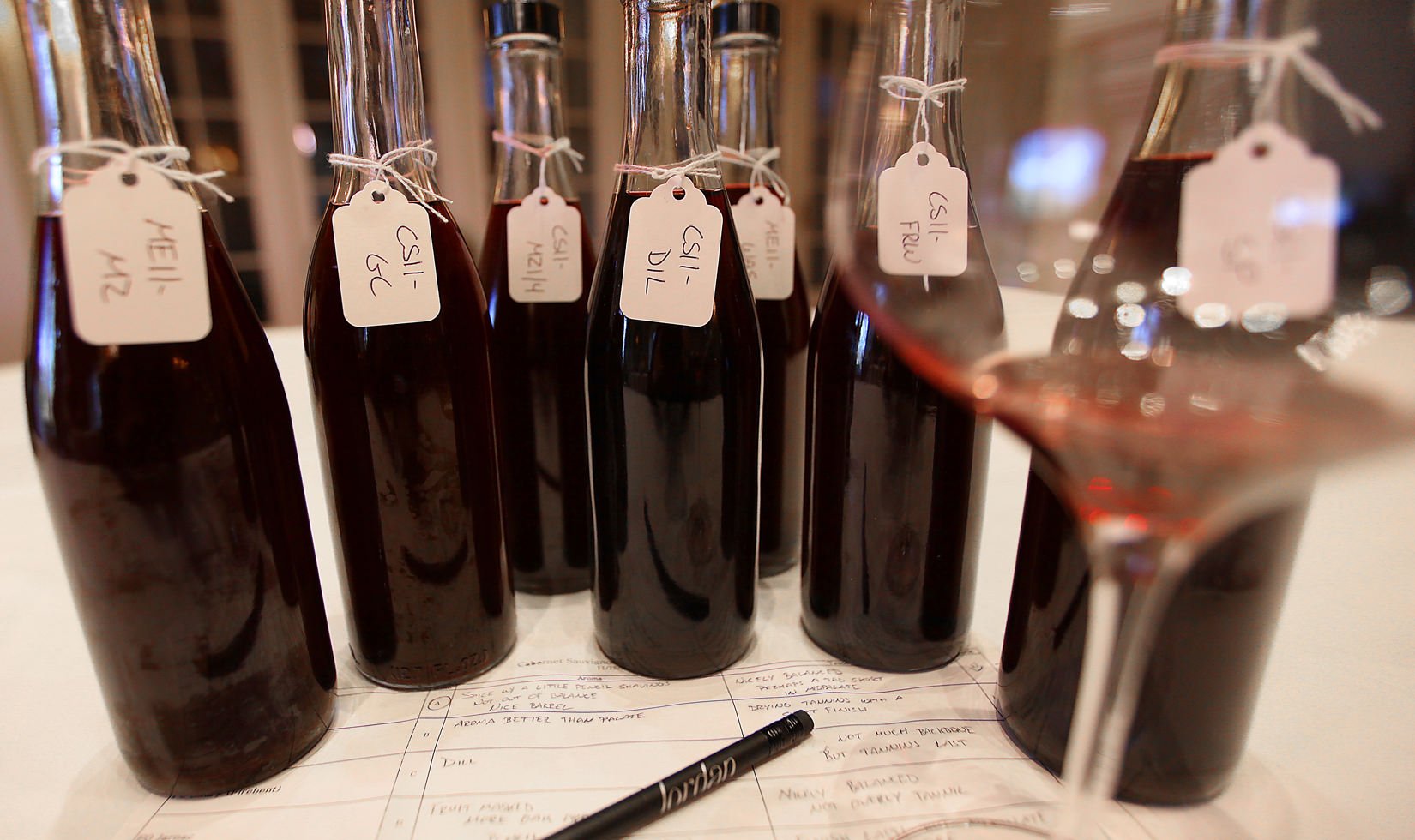
The Jordan winemaking team is also busy blind tasting during fall. Stepping away from the analytical side of the winemaking process, we sit down and taste the individual lots of the new harvest in a manner that strips everything away but the most important question: is it good enough to be in the final blend of Jordan and how does it fit in? In addition to identifying which components will move forward, a blind tasting is also performed with the mission of prescribing exactly which barrels these chosen components would be blended into for the final “Barrel Blend.” This tasting consists of nine different glasses of the previous vintage of Jordan Cabernet that had each been aged in a different barrel. Much like the component tasting, the goal is simply to identify which barrels truly showcase the qualities of the blend and best express the combination of elegance, balance and finesse that we strive for. Only after discussing as a group which qualities are appreciated or not favored about each of the wines, the barrels are revealed, and they decide which will be used for the new vintage’s Barrel Blend; hence the more than 800 brand new barrels rolling in through the back doors, quickly diminishing real estate in the warehouse. And while winery tour guests don’t get to partake in our blind tastings, they often see the movement of new French oak barrels rolling through the cellar–and can see our staff inspecting wine barrels for quality control.
